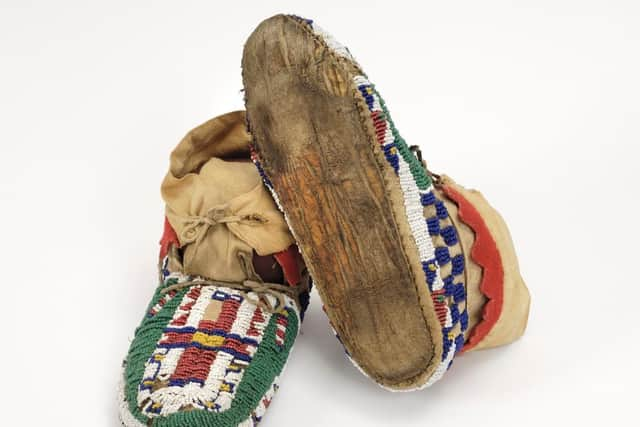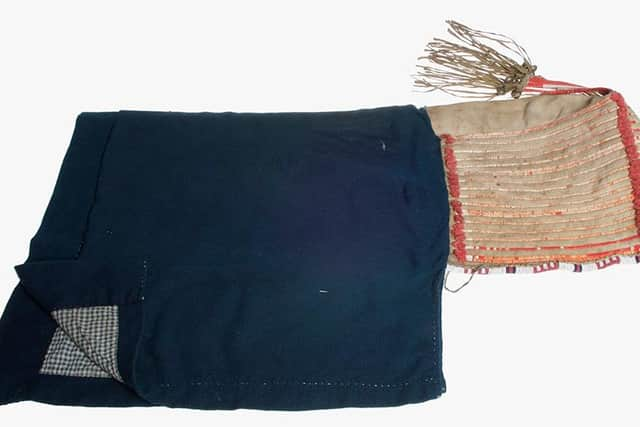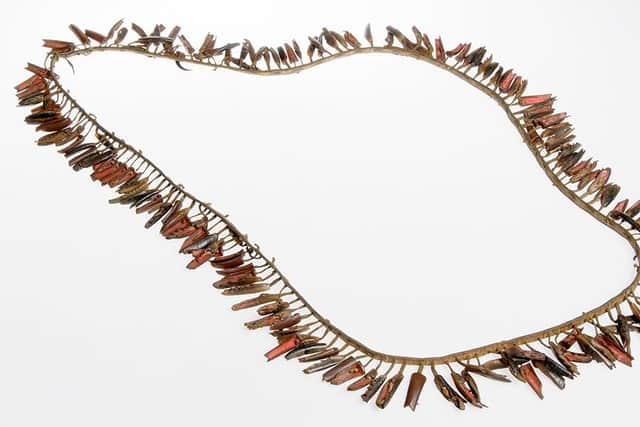Lakota massacre: Glasgow museums urged to hand back personal items taken from 300 Native American victims
It’s estimated 300 men, women and children were slaughtered when troops of the US 7th Cavalry moved in to disarm members of the Lakota tribe at Wounded Knee Creek on December 29 1890.
Rapid-firing Hotchkiss guns were used to cut down the fleeing victims, who had been causing official concern over their devotion to a religious following called the Ghost Dance movement, which involved praying for the return of buffalo dispersed by the arrival of white settlers.
Advertisement
Hide AdAdvertisement
Hide AdA Wounded Knee baby bonnet, moccasins and a necklace made from deer hooves were given to Glasgow Museums by George Craiger, a Lakota interpreter for the Buffalo Bill Wild West Show, which was playing to packed-out audiences in the Scottish city the year after the massacre, in 1891.


Craiger also ‘donated’ or ‘sold’ a bloodied Ghost Dance shirt stripped from a victim, which was put on public display in the Kelvingrove Museum until it was spotted by a Native American man who was touring Scotland in 1992.
This led to the involvement of Marcella Le Beau, a member of the Cheyenne River Sioux Reservation’s chapter of the Wounded Knee Survivors Association, which began the process of repatriating the shirt to the Lakota people, which finally happened in 1999.
It is understood that Ms LeBeau was in negotiation with Glasgow over the return of the other items, when she died last month, aged 102. The discussions came to light in a Freedom of Information request sent to Glasgow Life, the keepers of Glasgow’s museums, over repatriation requests for disputed items in the city’s collections.


Charles New Holy, acting Chief of the Wounded Knee Massacre Survivors Association in South Dakota said his organisation would now be formally seeking the return of the baby bonnet, moccasins and necklace made from deer hooves.
He said: “I have spoken to my consortium about this. And yes, we would like these items returned.
“Why would you strip children of clothing after you murder them?
“We have every right to our ancestors' belongings.”


Requests have been made for other items from the Nigerian National Commission for Museums and Monuments, including two ‘lost’ bronze heads taken from a shrine in the Royal Palace of Benin plus a cast bronze staff head with Benin bird of prophecy on ‘square top of shaft with spiral groove’.
Advertisement
Hide AdAdvertisement
Hide AdThe Archaeology Services of India are seeking the return of three stone 16th Century pillar fragments, part of a temple at Cawnpor and a Stele, representing Surya, the sun god, driving across the sky.
Documentary film maker Steven Lewis Simpson who travelled to Wounded Knee for the Ghost Dance shirt hand-over 1999, said: “Museums don’t want to give anything away. They would not have given the Ghost Shirt away 20 years ago if it was not for the pressure they were put under by the great Glasgow public.!
A spokesperson for Glasgow Life said: “A baby bonnet, moccasins and a necklace made from deer hooves were donated to Glasgow’s collection at the same time as the Lakota Ghost Dance Shirt.
“These items have not been subject to a request to return them.”
A message from the Editor:
Thank you for reading this article. We're more reliant on your support than ever as the shift in consumer habits brought about by coronavirus impacts our advertisers.
If you haven't already, please consider supporting our trusted, fact-checked journalism by taking out a digital subscription.
Comments
Want to join the conversation? Please or to comment on this article.